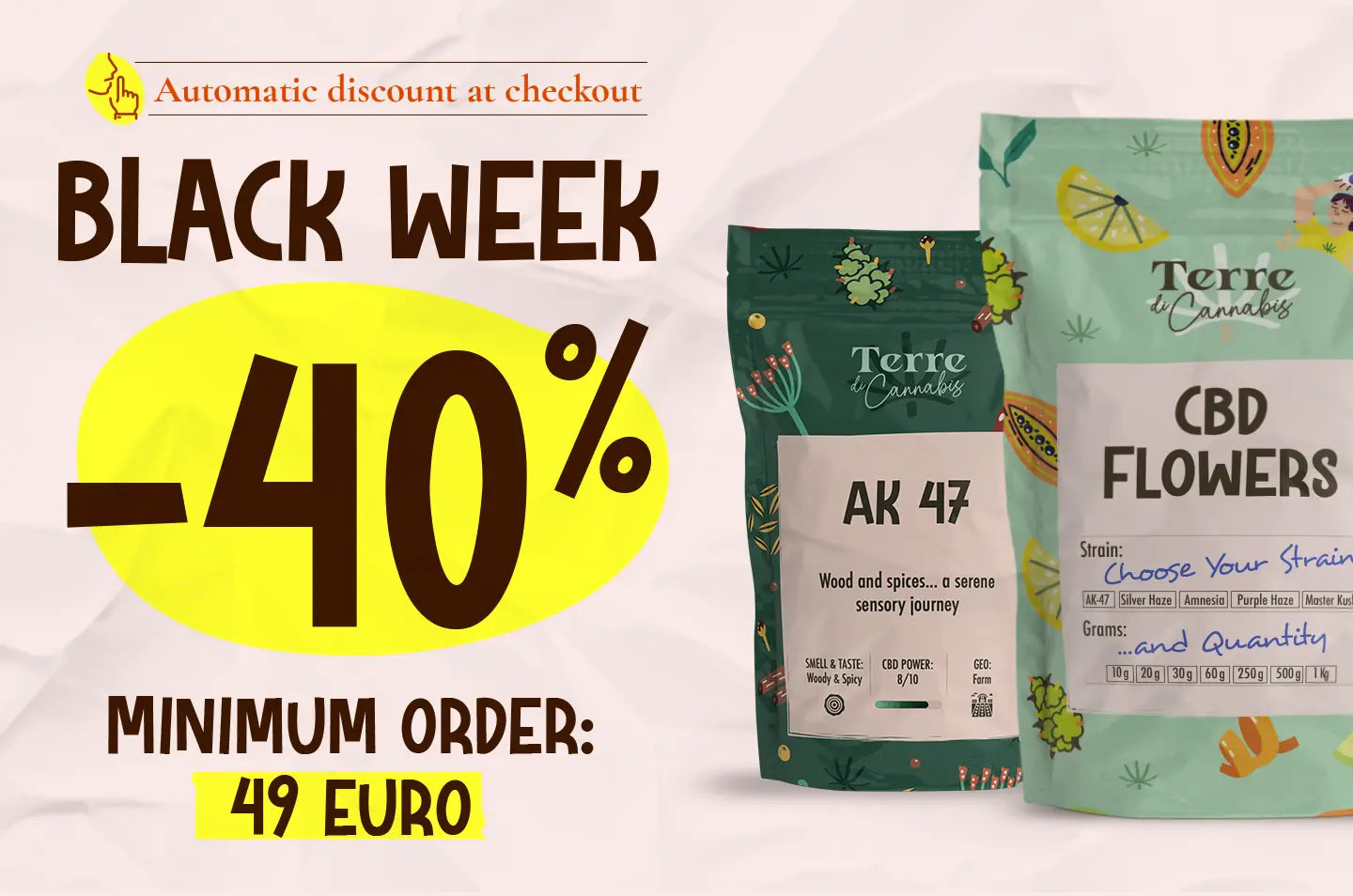CBG is short for cannabigerol. It is a non-psychoactive cannabinoid , present in approximately 1% of the entire hemp plant. This molecule is experiencing a phase of great attention from science: it is currently being studied for its pharmacological potential, although it has not yet been subjected to in-depth studies.
Despite recent scientific studies, not much is still known about CBG. Researcher Ethan B. Russo published an article in the British Journal of Pharmacology , which delves into the effects of phytocannabinoids and terpenoids, their medicinal qualities and potential pharmacological applications. Russo says CBG has antifungal, pain-relieving, and antidepressant properties .
CBG could also play a role in the treatment of psoriasis and MRSA - Staphylococcus aureus infection - and could counteract anxiety and muscle tension, given its ability to inhibit the spread of a chemical substance called GABA. Russo notes that CBG may work synergistically with other components of the cannabis plant, such as the terpenoids phytol, linalool, caryophyllene oxide, and limonene.
CBG, a little history
CBG was extracted pure for the first time in 1964 by the scientist Y. Gaoni, who managed to study the structure and synthesize different types of cannabinoids in the laboratory.
According to studies carried out by Gaoni and his collaborators, cannabigerol is a terpenophenolic compound , i.e. like the others present in cannabis , it can be divided into three molecules which in turn have different chemical properties , each with its own application in the pharmaceutical field. For example, the so-called phenolic ring has antimicrobial and antibacterial properties. The two lipophilic chains, located at opposite ends of the phenolic ring, are the n-alkyl chain and the terpene chain.
The two lipophilic chains have different therapeutic applications: they are poorly water-soluble and this allows them to penetrate better inside the tissues, thus guaranteeing a greater therapeutic effect compared to other drugs .
CBG: How is it different from CBD?
The main difference between CBD and CBG lies in the different quantity in which the two molecules are present in the cannabis plant : CBG is present in traces, in quantities equal to 1% or less, while CBD is very abundant within the cannabis sativa . Both molecules are non-psychoactive, have little to no side effects, and offer a wide range of health benefits.
Like CBD, CBG also has enormous benefits in its interaction with the endocannabinoid system: a 2015 study found that CBG is potentially effective in treating bladder dysfunction , while a 1990 study found that CBG can reduce intraocular pressure , cause of glaucoma. It has neuroprotective properties , which make it able to prevent the degeneration of nerve cells, as well as great potential as a treatment for irritable bowel disease .
CBG is considered a remedy for skin diseases such as psoriasis , as it can inhibit the proliferation of keratinocytes. Among the effects that most attract the attention of science are those that CBG appears to have on cancer. According to recent studies, CBG is an antagonist of the TRPM8 gene and could be used as a treatment in the treatment of prostate cancer and bladder inflammation and diseases.
CBD and CBG: unity is strength
The combination of CBD and CBG is starting to interest research, thanks to the enormous potential attributed to the combination of these two non-psychoactive cannabinoids.
They are two molecules that act in synergy, working simultaneously on two different aspects of the problem to be treated. CBD , for example, stimulates an enzyme called FAAH which is responsible for the production of endocannabinoids in the body and – in case of deficiency or overproduction – acts as a regulator. On the contrary, CBG acts directly on the receptors of the endocannabinoid system, especially on the CB1, CB2 and 5-HT1A receptors. We could say that if CBD concentrates its action on the key, CBG instead acts on the lock: the combination of both allows you to open the door easily.
For example, CBG is known for its ability to relieve pain thanks to its analgesic properties . Scientific studies that have measured the effects of isolated CBD in the treatment of acute pain have not reported beneficial effects, contrary to what has been found in the treatment of chronic pain. In this case, in fact, CBD had shown a powerful analgesic action, in association with other cannabinoids. In particular, CBG has significant analgesic properties against inflammatory pain ; It works by increasing the endocannabinoid tone, allowing the anandamide to act over a longer range and to synergistically increase the pain-relieving effects of THC.
The same can also be said for Cannabichromene (CBC), which enhances the pain-relieving effects of THC. CBG is a very important cannabinoid especially for the treatment of glaucoma, since it has been discovered that its use reduces the intraocular pressure which causes the disease.
The entourage effect
When studies on cannabinoids began, not much was known about the potential of the cannabis plant. Scientist Raphael Mechoulam was among the first to carry out extensive research on the cannabis plant. In 1964 he was the first to isolate THC, allowing its pharmacological use. After isolating THC, Mechoulam realized that its effects were different from those of the entire plant and immediately understood that cannabinoids tend to act simultaneously with each other.
The spray known by the name of Sativex is an excellent example to explain how the so-called entourage effect works: the spray uses all the cannabinoids and terpenes present in the plant, and exploits the bond established between them. According to GW Pharmaceuticals , which produces it, Sativex is a demonstration of how therapeutic cannabinoid and terpene compounds work harmoniously together. After more than a decade of testing, GW Pharmaceuticals has revealed that a whole plant extract containing the same amount of THC and CBD is much more effective in reducing MS pain and spasms than a drug containing a single compound.
CBG against neuro-inflammation and oxidative stress
According to a study conducted by researchers at the "Bonino Pulejo" Neurolesi Center in Catania, in collaboration with CREA - Council for agricultural research and analysis of agricultural economics and the University of Eastern Piedmont, cannabigerol would have a fundamental role in the fight against oxidative stress. According to researchers, in fact, inflammation and oxidative stress play a fundamental role in cellular neurodegeneration .
CBG, like many other natural compounds, is able to exert a very important neuro-protective action against inflammation and oxidative stress, and protects against the loss of neuronal cells. The research aimed “to evaluate the ability of CBG to protect motor neurons from medium-induced toxicity of LPS-stimulated RAW 264.7 macrophages”.
Using the MTT assay, a colorimetric assay to evaluate cellular metabolic activity, the Catania scientists observed that CBG-based pre-treatment was able to reduce the medium-induced loss of cell viability of LPS-stimulated macrophages in NSC-34 cells. According to the researchers, the results of the study confirmed the neuro-protective effects of CBG, a potential treatment against neuro-inflammation and oxidative stress.






